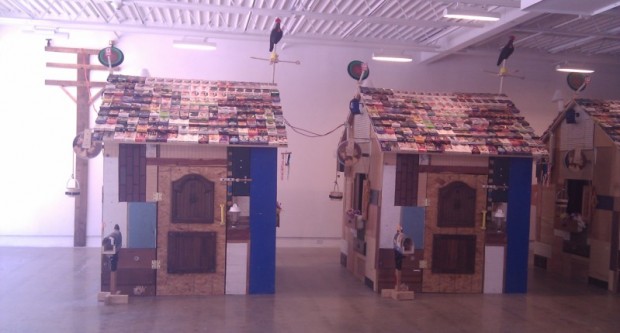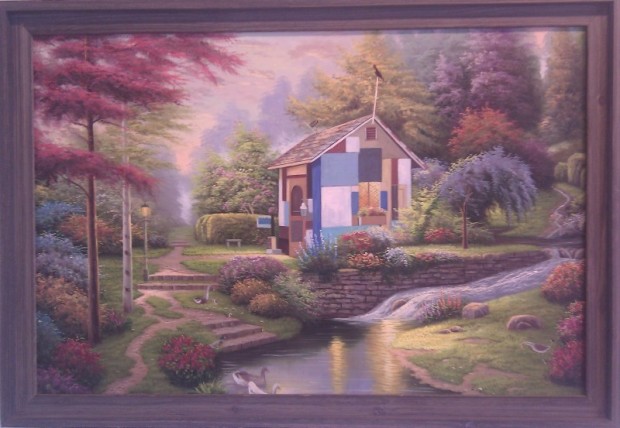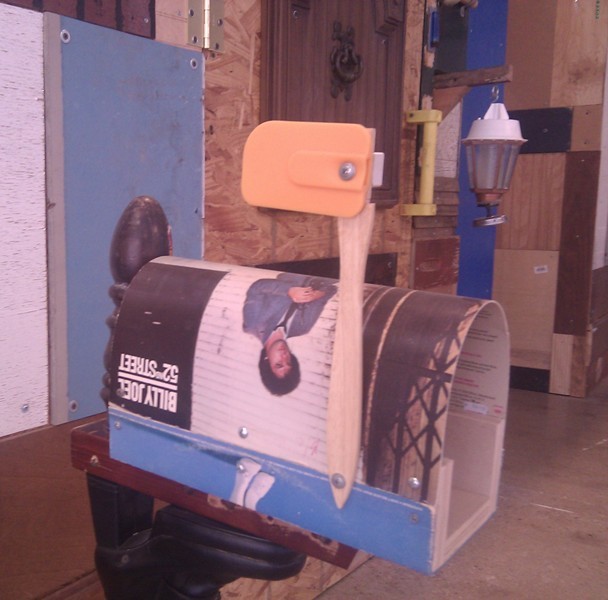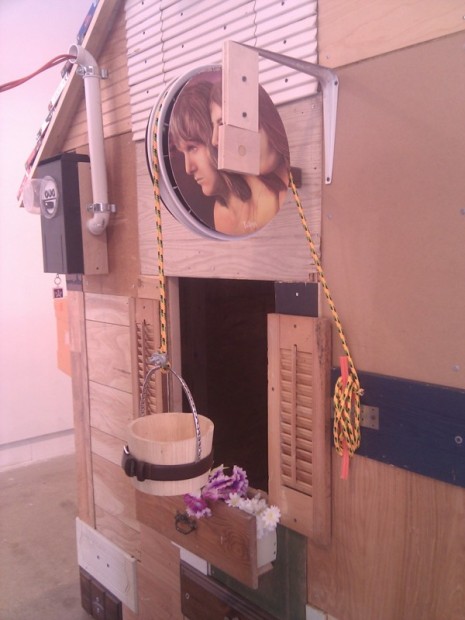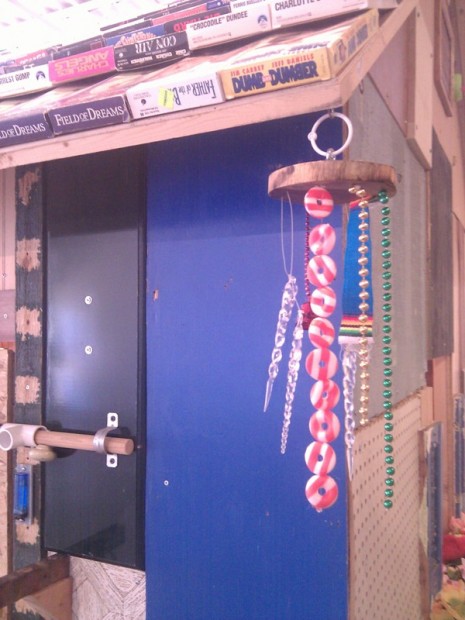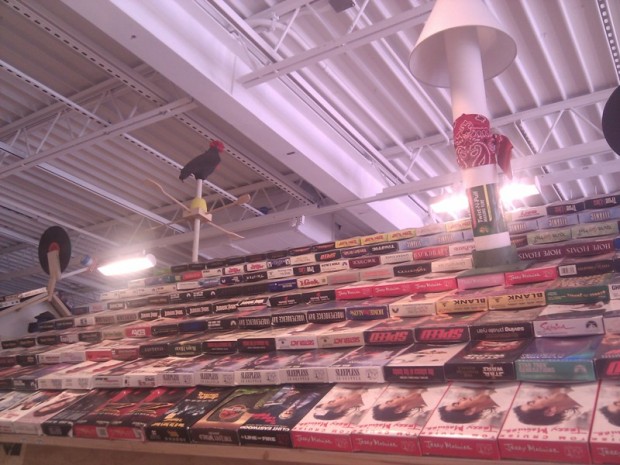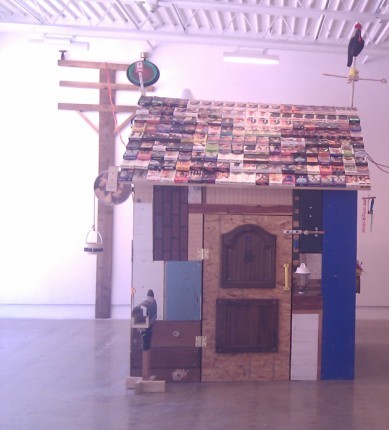Sterling Allen’s show up at Fort Worth Contemporary Arts, called Housing Edition, is a twenty-first century lesson in the old adage “You are what you eat.” Given the sure fact that our age consumes more, wastes more, and puts more crud into our brains and bellies than any other period in history, it follows that we’d also produce worse things, too. That consumptive-poor quality relationship that is unique to our age is explored by Allen in his installation here at FWCA in three identical little houses, all made with re-purposed materials that are emblematic of our culture’s disposable trappings: Tupperware, particle board, silicone, plastics and video cassettes. There are also three nearly identical Thomas Kincaid style paintings of these little houses set in an idyllic setting with Japanese maples and a faux stream. The houses look like odd little patched clowns in a fake and saccharine-saturated world that’s captured in perpetual twilight (or is it dawn?).
Allen is overtly dealing with suburbia in Housing Edition by making look-alike houses that are made from cheap materials, set in close proximity in a scrutinizing environment, the gallery, which serves as a proxy for the cramped, manufactured communities that lie on the outskirts of every modern American city. The houses — outfitted with wells and weathervanes with roosters, window boxes made from dresser drawers, and mailboxes made from Billy Joel album covers and silicone spatulas — are made from, and accented with, all the accoutrements of middleclass suburban dwelling. It amounts to a cheery, vacant blend of convenience and nostalgia — a world where everyone has “arrived,” and so outfits their homes with the brass tacks of bygone days — those wells and weathervanes — that no longer serve any purpose other than to indicate the owners’ awareness of history, in its most quaint and abbreviated sense, and therefore affiliate themselves somehow with lineage, or at least somethng like the taste that goes along with lineage (in the line of who, or what exactly?).
Everything in Allen’s world here acts as metaphor for something in the real world: what does it mean that these houses have roof shingles made of video cassettes? Something to do with living under the umbrella of Hollywood fantasy, maybe, sheltering ourselves from real life with visions of heroism (The Mask of Zorro), romance (Sleepless in Seattle), family (Father of the Bride), history (Forrest Gump) or adventure (Speed).
Allen essentially asserts that we literally surround ourselves with the things we wish to identify ourselves by, and be you a suburb-dweller or urban one, none can escape that certain truth. In Housing Edition, Allen describes a kind of infinite, self-deluded navel gazing that’s symptomatic of a culture that’s utterly adrift despite the fact that it’s tethered, as Allen’s houses are, to the Great Grid Leash.


